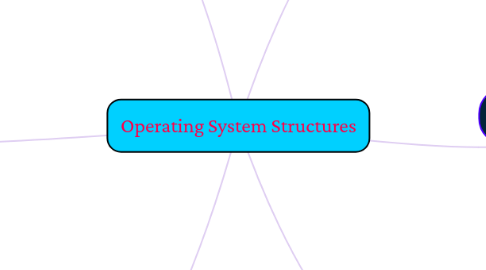
1. System Calls
1.1. System calls provide the interface between a running program and the operating system
1.2. Three general methods
1.2.1. Pass the parameters in registers
1.2.2. Parameters stored in a block, or table, in memory, and address of block passed as a parameter in a register
1.2.3. Parameters placed, or pushed, onto the stack by the program and popped off the stack by the operating system
1.3. Types of System Calls
1.3.1. Process control
1.3.2. File management
1.3.3. Device management
1.3.4. Information maintenance
1.3.5. Communications
1.3.6. Protection
2. Microkernel
2.1. Contains only essential core operating systems functions
2.2. Benefits
2.2.1. Extensibility
2.2.1.1. Allows the addition of new services
2.2.2. Flexibility
2.2.2.1. New features added
2.2.2.2. Existing features can be subtracted
2.2.3. Reliability
2.2.3.1. Modular design
2.2.3.2. Small microkernel can be rigorously tested
2.2.4. Portability
2.2.4.1. Changes needed to port the system to a new processor is changed in the microkernel
3. Operating System Design
3.1. Start by defining goals and specifications
3.2. The design of the system will be affected by the choice of hardware and the type of system
3.3. User goals
3.3.1. operating system should be convenient to use, easy to learn, reliable, safe, and fast
3.4. System goals
3.4.1. operating system should be easy to design, implement, and maintain
4. Operating System Services
4.1. -User interface
4.1.1. Almost all operating system have a user interfaces (UI)
4.2. Program execution
4.2.1. Load a program into memory
4.3. I/O operations
4.3.1. Since user programs cannot execute I/O operations directly, the operating system must be provide some means to perform I/O
4.4. File-system manipulation
4.4.1. User read and write files
4.5. Communications
4.5.1. Processes may exchange information on the same computer or between computer over a network
4.6. Error detection
4.6.1. Ensure correct computing by detecting errors in te CPU and memory hardware
5. Additional Operating System Funchtion
5.1. Resourse allocation
5.1.1. Allocating resources to multiple users or multiple jobs runing at the same time
5.2. Accounting
5.2.1. Keep track of and record
5.3. Protection and security
5.3.1. The owners of information stored in a multiuser or networked computer system
6. Layered Approach
6.1. The operating system is divided into a number of layers
6.2. Advantage
6.2.1. Simplicity of construction and debugging
6.3. Disadvantages
6.3.1. The careful definition and interaction of the layers
6.3.2. Less efficient
